Section 1 Subsystems
Memory -
Memory performance is very important on a motherboard, especially when you have a CPU with multiple cores and threads. If you have slow memory your cores and threads can become starved for data to execute. To test memory performance we run both Sisoft’s SANDRA and AIDA64. These two combine to not only give us accurate numbers but to validate each other. For testing at stock speeds the memory is hard set to 1333MHz while overclocking testing is done at the highest stable speed for the voltage of 1.65v this is due to the different memory dividers for each CPU. As such, the memory speeds will vary greatly. This means that the overclocked numbers are a little misleading and while they can show a trend are really only included to show if a board has a problem with memory performance at high clockspeeds.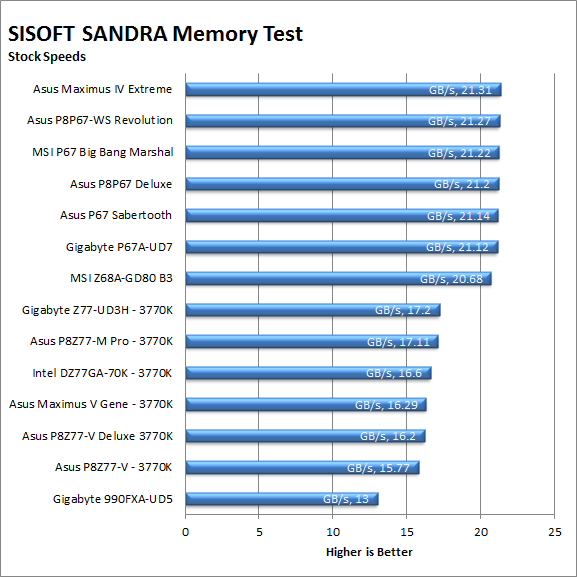
The Gigabyte Z77X-UD3H was at the top of the Z77 list for memory performance (even if only by a small margin). This could be a good indicator that we will see solid performance from our memory dependent tests like HyperPi, PCMark07 and 3D Rendering. It is also good for those that like to multi-task with better memory performance you can usually have more programs open without seeing the system bog down. Of course the amount of memory will be a big part of that as well.

Drive performance -
Drive performance is also one of the major subsystems that goes to make up the performance of a motherboard. For our testing we use Sandra and AIDA64 again. We only test with single drives for each type of controller present on the motherboard (unless it is a professional product where we will use RIAD 5 and/or 10). We have also begun using a Seagate PS-110 USB 3 external HDD and a Kingston HyperX USB 3.0 Flash drive for our USB 3.0 performance. As a side note, we include the overclocked numbers here to make sure (again) that you are not going to see a major drop in performance due to minor instabilities at high clock speeds.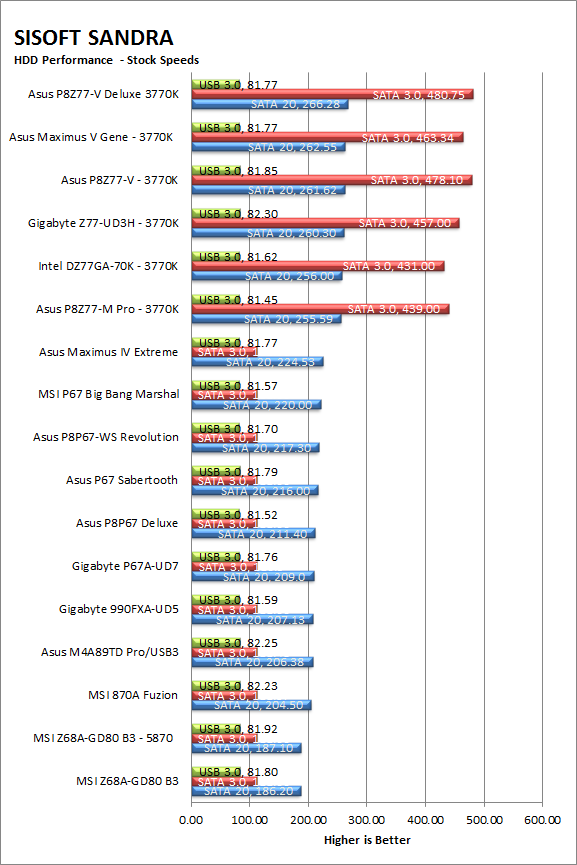
For SSD performance the Z77X-UD3H right behind Asus’ P8Z77 – V for both SATA 2.0 and SATA 3.0. This is a good showing and one that when combined with the solid memory performance should give you good results in almost any type of task you want to put the UD3H to. We are expecting to see some good numbers in the rest of our testing.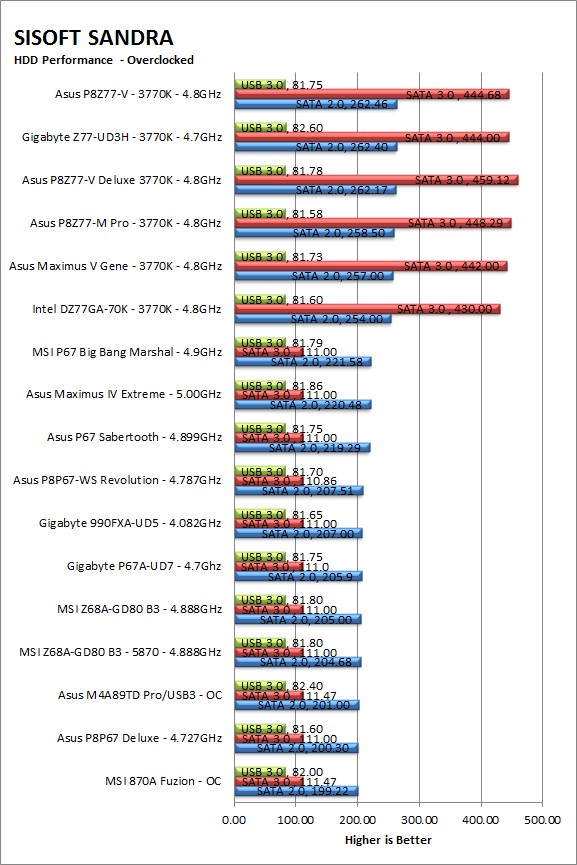
Power -
Power efficiency is another of those misnomers that we get caught up in. We hear about idle states and power gates. But what does that mean to you and I? On the surface having power management that reduces idle power sounds great and can be a benefit to someone that leaves their system on for long periods of time (and inactive) but how a system handles power under load and the delta between the two states is often more important than the idle power usage numbers. We use only P3 Kill A Watt instruments for measuring power.
| Power iGPU Stock | Power iGPU Overclocked |
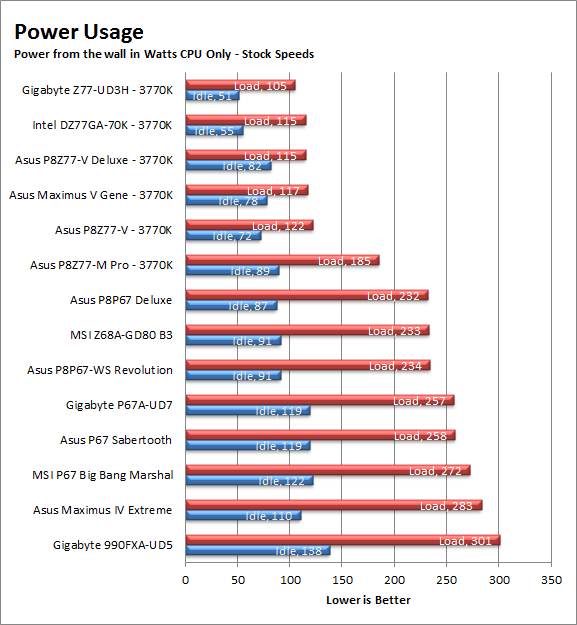 |
 |
The Z77X-UD3H is very power efficient when it is just dealing with the Core i7 3770K. Even overclocked we found it to be very efficient. Once we put in the HD5870 the system pulled quite a bit more power. This was not unexpected, but we would have thought that we would have seen less of a power demand considering how efficient the Z77X-UD3H was with only the CPU and its GPU.
| Power With Add-in GPU Stock | Power With Add-in GPU Overclocked |
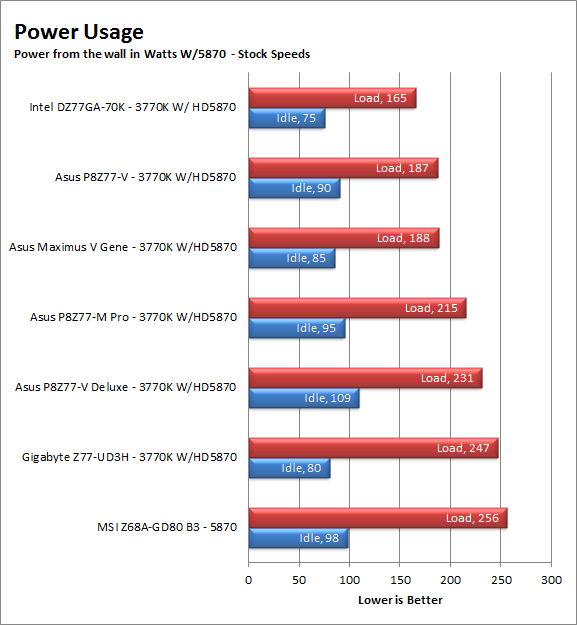 |
 |
Cooling (Board Level) -
Board level cooling is an important factor in product performance and longevity. Components like the chipset, VRM modules and even capacitors need to be kept relatively cool to prevent failure. As these parts are made of silicon, they have a thermal breakdown threshold; or melting point. At that temperature the actual transistors built into chip will begin to deform and break down. Granted, the threshold is often very high, but you still need to make sure that components stay away from this level of heat for longer product life.
| PCH Heat iGPU Stock | PCH Heat iGPU Overclocked |
 |
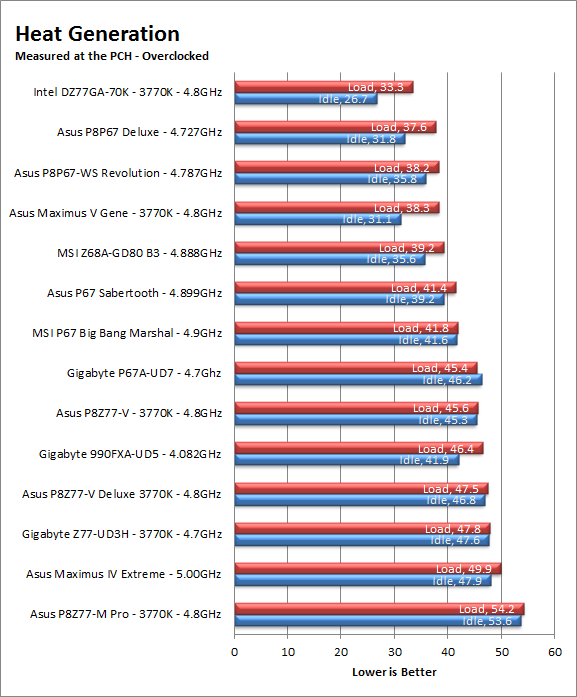 |
The cooling on the Z77X-UD3H was not as efficient as we would have liked. Granted the board is not in a case where there is the potential for continuous airflow over the heatsinks, but still we would have liked to see it perform better. The good news is that even overclocked there is not a huge difference between idle and load temperatures. This means that you do not have to worry that much about damaging the PCH by overclocking. You should still keep air flow and cooling in mind, but it does not look like you will have that much of a risk of killing it unless you try and pump a ton of voltage through it.
| PCH Heat With Add-In GPU Stock | PCH Heat With Add-In GPU Overclocked |
 |
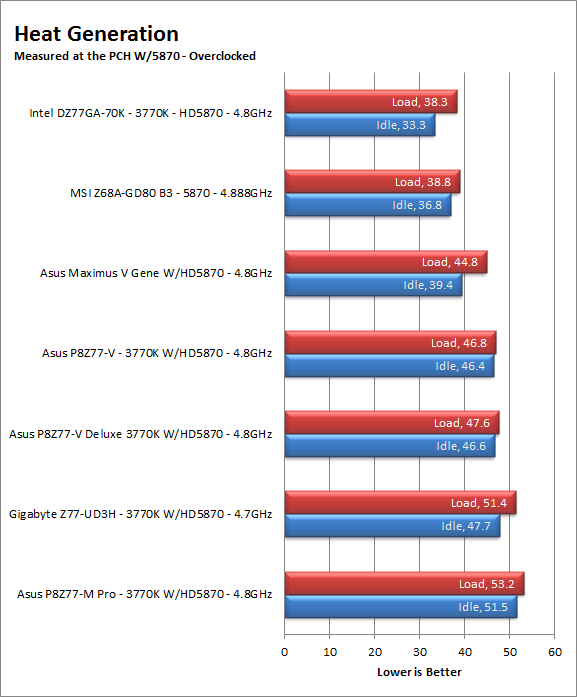 |
Audio -
Audio is highly subjective. What we find pleasing may sound “off” to you. That is always going to the problem with testing audio; results will vary too widely depending on the tastes of the listener. However, there are ways of measuring the audio output with an objective ear. There is also the issue of audio causing performance issues in gaming and video playback. The reason this is a potential source of concern is that all onboard audio CODECs (Compression/Decompression) are CPU controlled. This means that while the audio chip controls the audio levels and effects of the audio the actual work is done on the CPU. Usually this will not be a problem with today’s powerful CPUs. Even the lower and consumer level products can handle high-end audio these days. But again there is the chance that a bad design or software will hinder your system and performance. On the other side the limits of board space, cost, etc will also prevent the level of audio quality you can get from an add-in board. We test all audio parts with three media types, Movie (DVD), MP3 Music, and Gaming. These are pushed to our Tec On model 55 Tube Amp to see if we can detect any signal issues in the reproduction.
The audio on the Z77X-UD3H is good; not great, but still good enough for most tasks. Audio is one place that Gigabyte has always tried to work on even back in the days when they were not doing so well in raw performance. However, there really is not that much you can do with an onboard CODEC. Gigabyte has (on their higher level boards) built entire audio cards into the product, but for the most part you are getting signal processor that still relies on the CPU to perform the software based audio compression and decompression. We found that for many audio samples there was a tendency to have cluttered mid-range sounds with light bass (meaning that the mids and lows are not separating properly). Fortunately there is not much brass in the high-end so what you end up with is decent sound that feels like it lacks punch.
Networking -
This one is something that is a requirement anymore. If you have a computer, the chances are good (like 99%) that you are also connected to high-speed internet. With this you need a good and solid LAN chip to make sure that your data flows properly out and back. The networking performance was also very solid with no noticeable lag or issues noted in gaming, file transfer, media streaming or anything else.

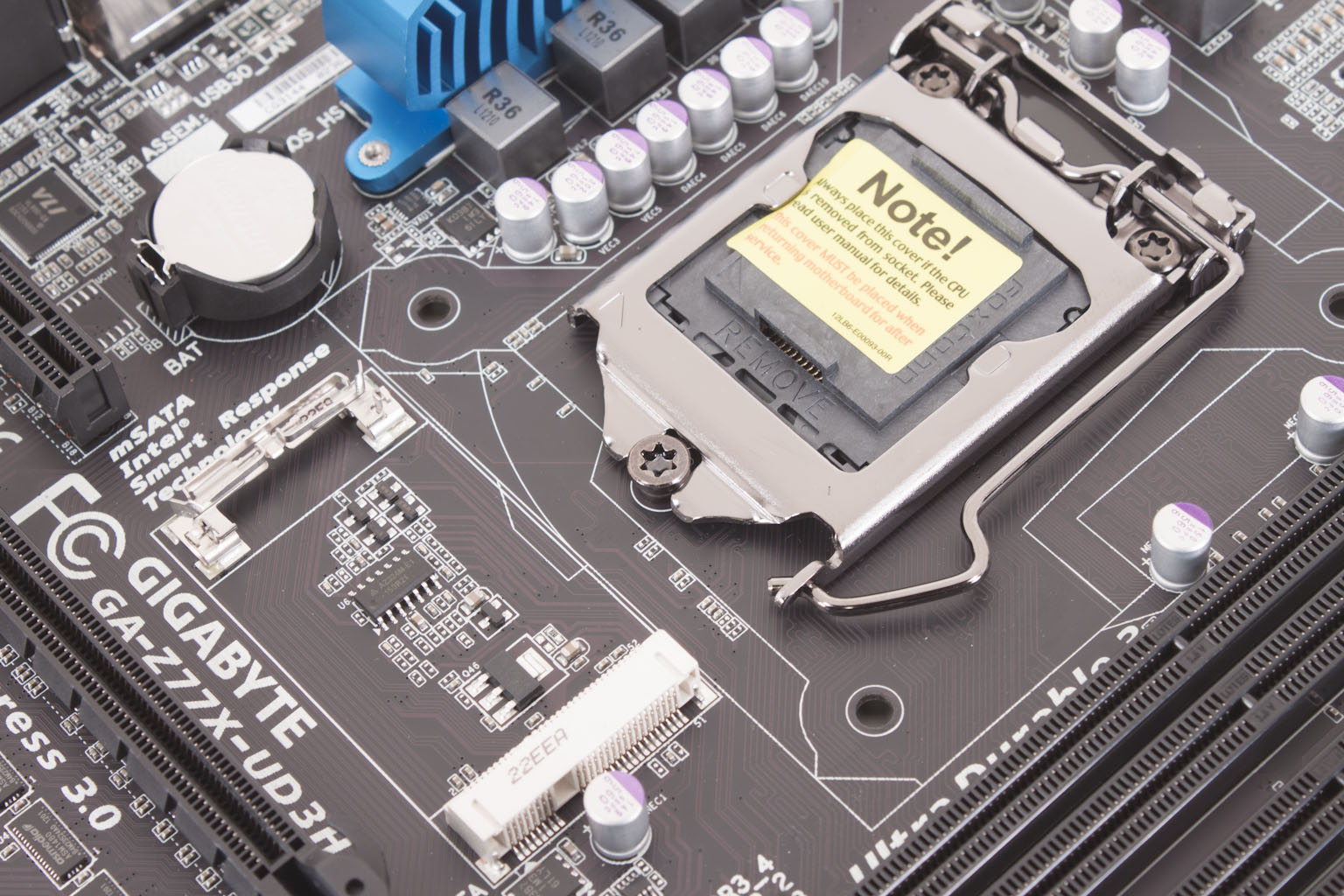 After spending some time working with the Gigabyte Z77X-UD3H and all of the features that are packed into this board we are ready to cover the performance and user experience side of this motherboard. For those of you that might have missed it you can catch our
After spending some time working with the Gigabyte Z77X-UD3H and all of the features that are packed into this board we are ready to cover the performance and user experience side of this motherboard. For those of you that might have missed it you can catch our 

